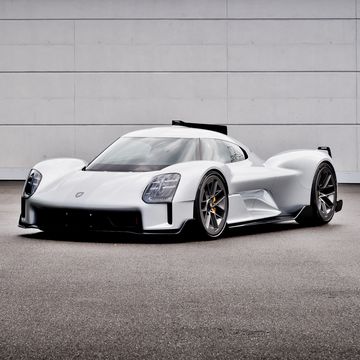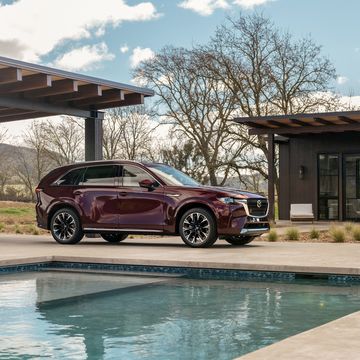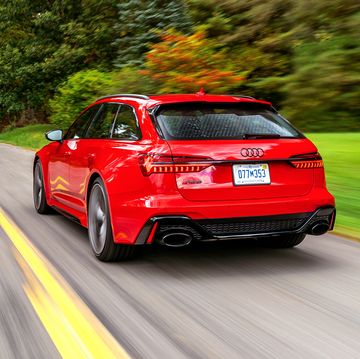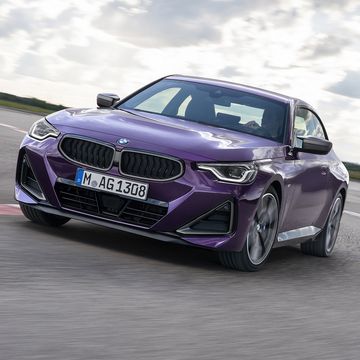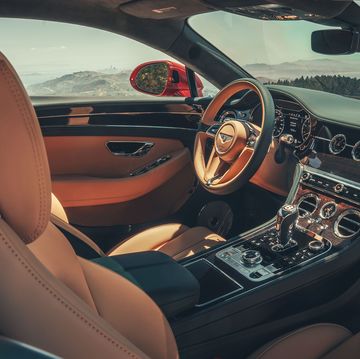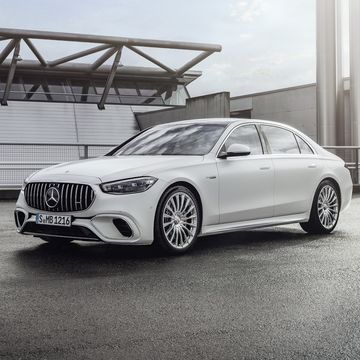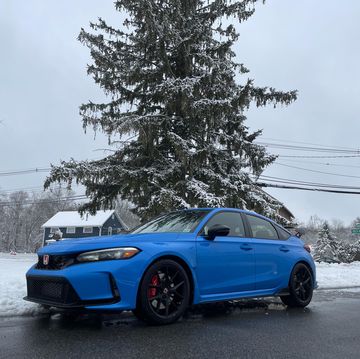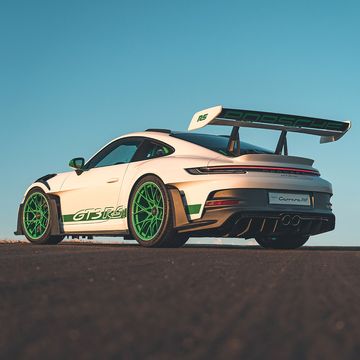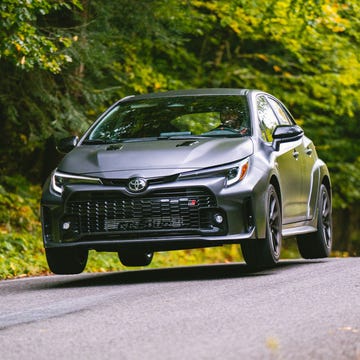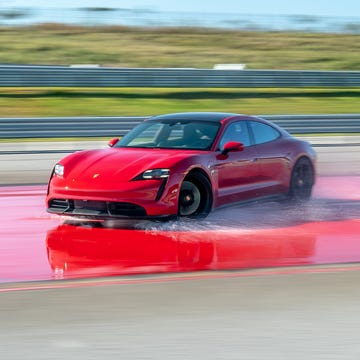Hawthorne Airport is just about exactly under the flight path of LAX, and you'll see a big red sign with Tesla's name on it stretched across one of the larger hangers there. Next door is SpaceX, Elon Musk's rocket factory. It's a little slice of what California was like in the golden era after the war, and Musk is doing an impeccable impression of Howard Hughes. That's where I am for the unveiling of the Tesla Model S P85D and its less nutty siblings. It's a monster.
As Musk told the assembled crowd, "We were able to improve almost everything about the car, which is a rare thing."
The short of it is this, you can now get the Model S with dual motors. The new setup adds a medium-sized motor just behind the front axle and makes the cars all-wheel drive. All three new models—the 60D, 85D, and P85D—use the same 188-hp front motor. The 60D and 85D use it on the rear axle as well. The supercar-grade P85D, however, keeps the existing 470-hp motor in back for a monstrous 691-hp / 687 lb-ft combo.
The dual-motor setup Tesla shaves a second from the already quick P85's 0-60 time. The P85D hits that mark in just 3.2 seconds. That's faster than a Dodge Charger Hellcat or a Porsche Panamera Turbo S. The quarter mile mark arrives in 11.8 seconds. It feels incredible from inside the car—electric motors hum hard and then 60 happens. Almost instantly. Musk said that they benchmarked the McLaren F1 for acceleration performance. If not for the badge in back and the red brake calipers, you'd be hard pressed to tell the P85D from the regular single-motor P85.
Both the 60D and 85D shave two tenths off their acceleration and quarter-mile times and add 10 miles of range, the latter thanks to the additional regen capacity from the second motor. The 85D will now travel 295 miles on a single charge—tantalizingly close to the magic 300-mile mark. The 60D will travel 225 miles before needing to be plugged back in.
There's autopilot too, a spookily sophisticated semi-autonomous drive system. The car senses road signs with optical cameras, and a 360 degree sonar keeps an eye on barricades and traffic. When traffic slows, so does the Tesla, even to a dead stop. Lanes can be changed with a flick of the turn-signal indicator stalk. When the car isn't doing the driving, the Model S will provide feedback through the steering wheel if your merge isn't up to snuff.
The brakes bring big news, too. Rather than use a vacuum brake booster, Tesla uses an electromechanical brake setup. The feeling under your foot comes from the resistance of a spring and an electric motor. Tesla VP of vehicle engineering Chris Porrit says it's like a steering rack on its side. The Porsche 918 is the only other production car using this system. The arrangement gives Tesla great flexibility with the automatic brakes in autopilot mode. The car can call for high-g braking in panic stops or gentle, chauffeur-style slowdowns. Concerned about brake feel? Tesla can tune it.
Musk says "there's an expectation of a driver in the loop" with the new autopilot tech, but we can expect a fully autonomous car in the next five or six years. It's scary and exciting at the same time. After all, we humans are increasingly incidental to the driving experience. Right now, things are at the limit of what regulations allow.
Oh, and this technology has been installed on every car made in Tesla's factory for the last two weeks. Tesla's future? It's now.
UPDATE—Here's a video of the P85D in action:
Tesla Model S Dual Motor Specs (vs comparable single-motor model)
Note: The Tesla Model S P85D specifically has 50/50 weight distribution and 1 g maximum lateral acceleration.
Top Speed
60D: 125 mph (vs 120 mph for 60 kWh)
85D: 155 mph (vs 125 mph for 85 kWh)
P85D: 155 mph (vs 130 mph for P85)
0–60 mph Acceleration
60D: 5.7 sec (vs 5.9 sec)
85D: 5.2 sec (vs 5.4 sec)
P85D: 3.2 sec (vs 4.2 sec)
Quarter Mile Times
60D: 14 sec (vs 14.2 sec)
85D: 13.5 sec (vs 13.7 sec)
P85D: 11.8 sec (vs 12.6 sec)
Torque
60D: 362 lb-ft — 181 lb-ft front, 181 lb-ft rear
85D: 362 lb-ft — 181 lb-ft front, 181 lb-ft rear
P85D: 687 lb-ft — 244 lb-ft front, 443 lb-ft rear
Electric Motor Output
60D: 376 hp—188 hp front, 188 hp rear (vs 380 hp rear)
85D: 376 hp—188 hp front, 188 hp rear (vs 380 hp rear)
P85D: 691 hp—221 hp front, 470 hp rear (vs 470 hp)
Weight
60D: 4597 lbs (+ 176 lbs)
85D: 4824 lbs (+ 176 lbs)
P85D: 4936 lbs (+ 291 lbs)
Battery Range
60D: 225 miles (vs 215 miles)
85D: 295 miles (vs 285 miles)
P85D: 275 miles (vs 285 miles)




